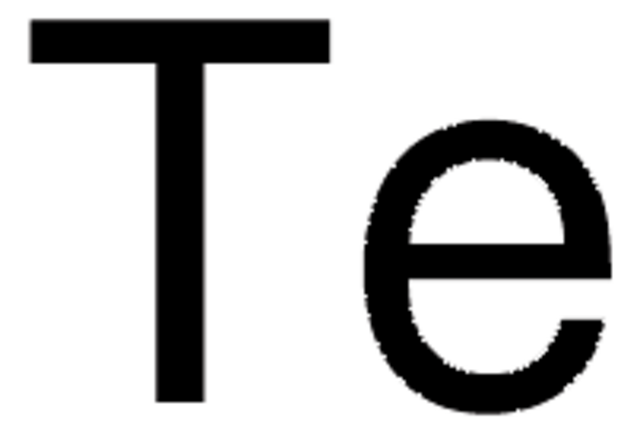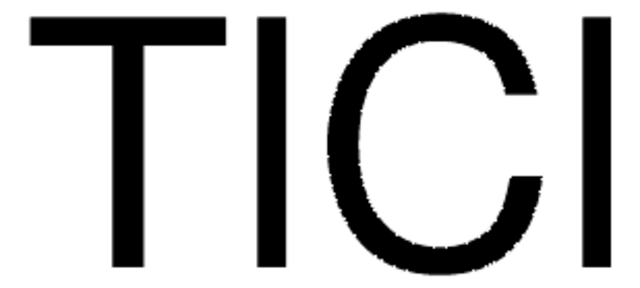205338
Tellurium tetrachloride
99%
Synonym(s):
Tellurium chloride, Tellurium(IV) chloride, Tetrachlorotellurium
About This Item
Recommended Products
Quality Level
Assay
99%
form
powder, crystals or chunks
bp
380 °C (lit.)
mp
224 °C (lit.)
density
3.26 g/mL at 25 °C (lit.)
SMILES string
Cl[Te](Cl)(Cl)Cl
InChI
1S/Cl4Te/c1-5(2,3)4
InChI key
SWLJJEFSPJCUBD-UHFFFAOYSA-N
Looking for similar products? Visit Product Comparison Guide
General description
Application
- Highly efficient regioselective synthesis of organotellurium compounds: Explores the reactions of Tellurium Tetrachloride with 1-alkenes, highlighting its utility in organic synthesis (VA Potapov et al., 2017).
- Cyclization Reactions: TeCl4 acts as a bis-electrophile in double-electrophilic cyclization reactions, demonstrating its versatility in organic transformations (N Korol, M Slivka, 2018).
- Regio-and stereoselective addition of tellurium tetrachloride: Investigates the addition of TeCl4 to methyl propargyl ether, emphasizing the stereochemistry of the addition process (MV Musalova et al., 2017).
Signal Word
Danger
Hazard Statements
Precautionary Statements
Hazard Classifications
Skin Corr. 1B
Storage Class Code
8A - Combustible corrosive hazardous materials
WGK
WGK 3
Flash Point(F)
Not applicable
Flash Point(C)
Not applicable
Personal Protective Equipment
Choose from one of the most recent versions:
Already Own This Product?
Find documentation for the products that you have recently purchased in the Document Library.
Customers Also Viewed
Articles
Thin film photovoltaic devices have become increasingly important in efficiently harnessing solar energy to meet consumer demand.
Our team of scientists has experience in all areas of research including Life Science, Material Science, Chemical Synthesis, Chromatography, Analytical and many others.
Contact Technical Service







